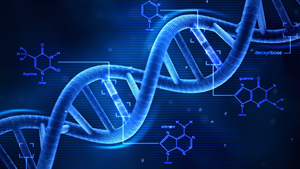 Jerusalem, Dec 6: Your choice of coffee or beer can not only affect your mood, but also influence a part of DNA linked to ageing and cancer, a new study claims.
Jerusalem, Dec 6: Your choice of coffee or beer can not only affect your mood, but also influence a part of DNA linked to ageing and cancer, a new study claims.
Working with a kind of yeast that shares many important genetic similarities with humans, the researchers from the Tel Aviv University found that caffeine shortens and alcohol lengthens telomeres - the end points of chromosomal DNA, implicated in ageing and cancer.
"For the first time we've identified a few environmental factors that alter telomere length, and we've shown how they do it," said Professor Martin Kupiec.
"What we learned may one day contribute to the prevention and treatment of human diseases," said Kupiec. Telomeres, made of DNA and proteins, mark the ends of the strands of DNA in our chromosomes and are essential to ensuring that DNA strands are repaired and copied correctly. Every time a cell duplicates, the chromosomes are copied into the new cell with slightly shorter telomeres. Eventually, the telomeres become too short, and the cell dies. Only foetal and cancer cells have mechanisms to avoid this fate.
The researchers grew yeast cells in conditions that generate free radicals to test the effect on telomere length.
They were surprised to find that the length did not change. They went on to expose the yeast cells to 12 other environmental stressors. Most of the stressors - from temperature and pH changes to various drugs and chemicals-had no effect on telomere length.
But a low concentration of caffeine, similar to the amount found in a shot of espresso, shortened telomeres, and exposure to a 5-to-7 per cent ethanol solution lengthened telomeres.
To understand these changes, researchers scanned 6,000 strains of the yeast, each with a different gene deactivated.
They then conducted genetic tests on the strains with the longest and shortest telomeres, revealing that two genes, Rap1 and Rif1, are the main players mediating environmental stressors and telomere length.
In total, some 400 genes interact to maintain telomere length, researchers note, underscoring the importance of this gene network in maintaining the stability of the genome.
Strikingly, most of these yeast genes are also present in the human genome.
"This is the first time anyone has analysed a complex system in which all of the genes affecting it are known," said Kupiec. The study was published in the journal PLOS Genetics.





Comments
Add new comment